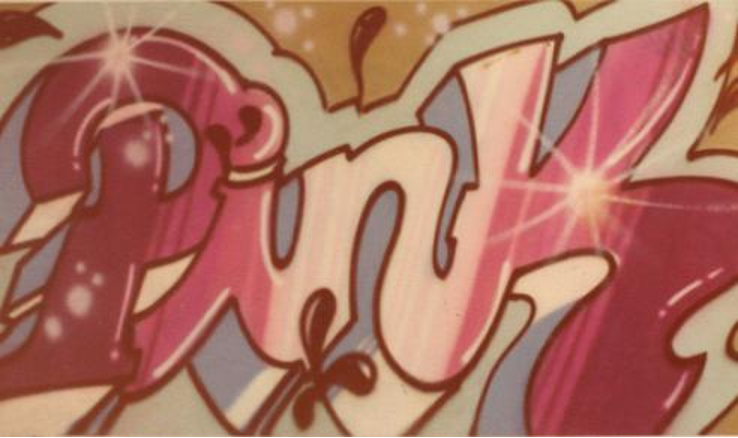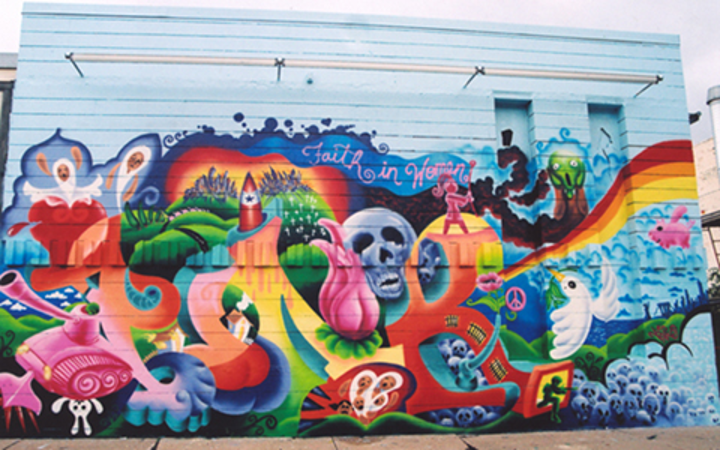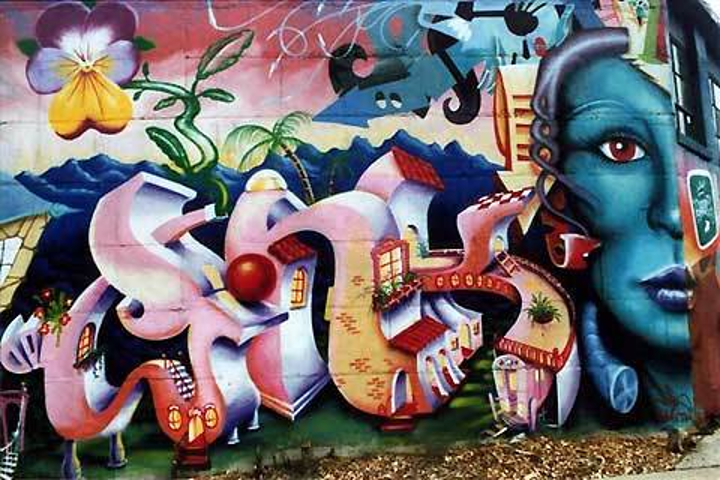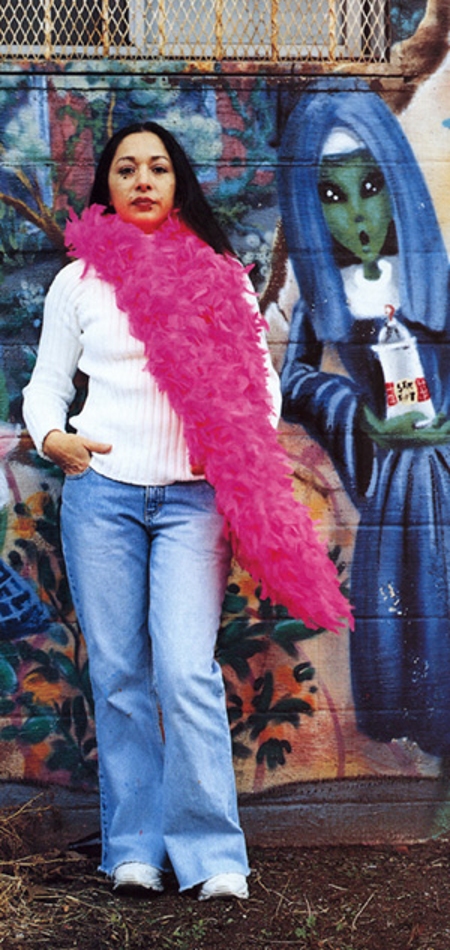Graffiti artist Lady Pink (Sandra Fabara) was born in Ambato, Ecuador in 1964 and grew up in New York City.[1] [2] She began writing at age 16 when her first boyfriend moved away to Puerto Rico after getting arrested for doing graffiti.[3] Heartbroken, she wrote his name everywhere while attending Manhattan’s High School of Art and Design. She named herself “Lady Pink” after her love of historical romances, England, the Victorian period and the aristocracy.[4] [5]
Being a female in the male-dominated world of graffiti often drew criticism and hostility from other writers, but Lady Pink persisted and completed her first train in 1980.[6] Knowing the dangers of painting alone at night, she painted subways and trains with a crew of young men named TC5 (The Crazy 5) from 1979-1985 simply because fellow male artists doubted she could.[7] From then on, she became known for her distinctive use of saturated colors and large scale paintings bearing her name throughout the city.[8]
A starring role in 1983’s Wild Style brought her national recognition, and she was also featured in Martha Cooper’s book Hip Hop Files.[9] Lady Pink’s artwork has also been highlighted in various galleries and exhibitions since she was 16 and had her first solo show at the Moore College of Art.[10] She is currently part of a permanent collection at the Whitney Museum, the Metropolitan Museum of Art in New York City, the Brooklyn Museum and the Groningen Museum of Holland.[11]
Today, she is a resident of Astoria, Queens where she runs a workshop organizing mural paintings with the city’s youth and lectures in schools throughout the Northeast.[12] She now also goes by “Pink Smith” (referring to her husband’s name) and runs her own company called Pinksmith Designs with him.[13] She feels it is important topass down the art of painting murals and has taught art lessons at Frank Sinatra High School for the Arts.[14] In her 30 year career of working with kids, she believes her murals are never tagged on “because I’ve paid my dues, painted the trains in the ‘80’s.”[15] Tony Meloni of the Anti-Crime Office, who helped bring murals to the Hell Gate Bridge, said, “Kids do have respect for murals. They don’t hit a mural out of respect.”[16] She also paints on canvas to create fine art that is treasured by collectors around the world, and her pieces cost no less than $8,000.[17]
Though many view Lady Pink as a Hip Hop pioneer, she does not choose to associate herself with that title. “I don’t think Hip Hop is a welcoming world for women. We lose our dignity; we are amongst those Hip Hop guys who take women only as a decoration for their arms. I am not down with that. They can call me a Hip Hop pioneer, but I don’t really feel that way.”[18] Whether she wants to accept it or not, various artists in the Hip Hop community look up to her and will always admire the fact that she paved the way for other female graffiti artists.







Origin:
Ambato, Ecuador
Style:
- Distinctive use of saturated colors and large scale murals and bearing her name on walls, subways and trains.
- Now creates fine art done with paint on canvas.
Cited Sources
[1] http://www.pinksmith.com/bio.php
[2] http://en.wikipedia.org/wiki/Lady_Pink
[3] http://www.coolehmag.com/frontEnd/interview.php?i=43&s=71
[4] Ibid.
[5] http://www.queenstribune.com/feature/TurningGraffitiIntoAPositi.html
[6] http://en.wikipedia.org/wiki/Lady_Pink
[7] http://www.coolehmag.com/frontEnd/interview.php?i=43&s=71
[8] Ibid.
[9] http://en.wikipedia.org/wiki/Lady_Pink
[10] http://www.coolehmag.com/frontEnd/interview.php?i=43&s=71
[11]Ibid.
[12] http://www.queenstribune.com/feature/TurningGraffitiIntoAPositi.html
[13] http://en.wikipedia.org/wiki/Lady_Pink
[14] http://www.queenstribune.com/feature/TurningGraffitiIntoAPositi.html
[15] Ibid.
[16] Ibid.
[17] Ibid.
[18] http://www.coolehmag.com/frontEnd/interview.php?i=43&s=71



